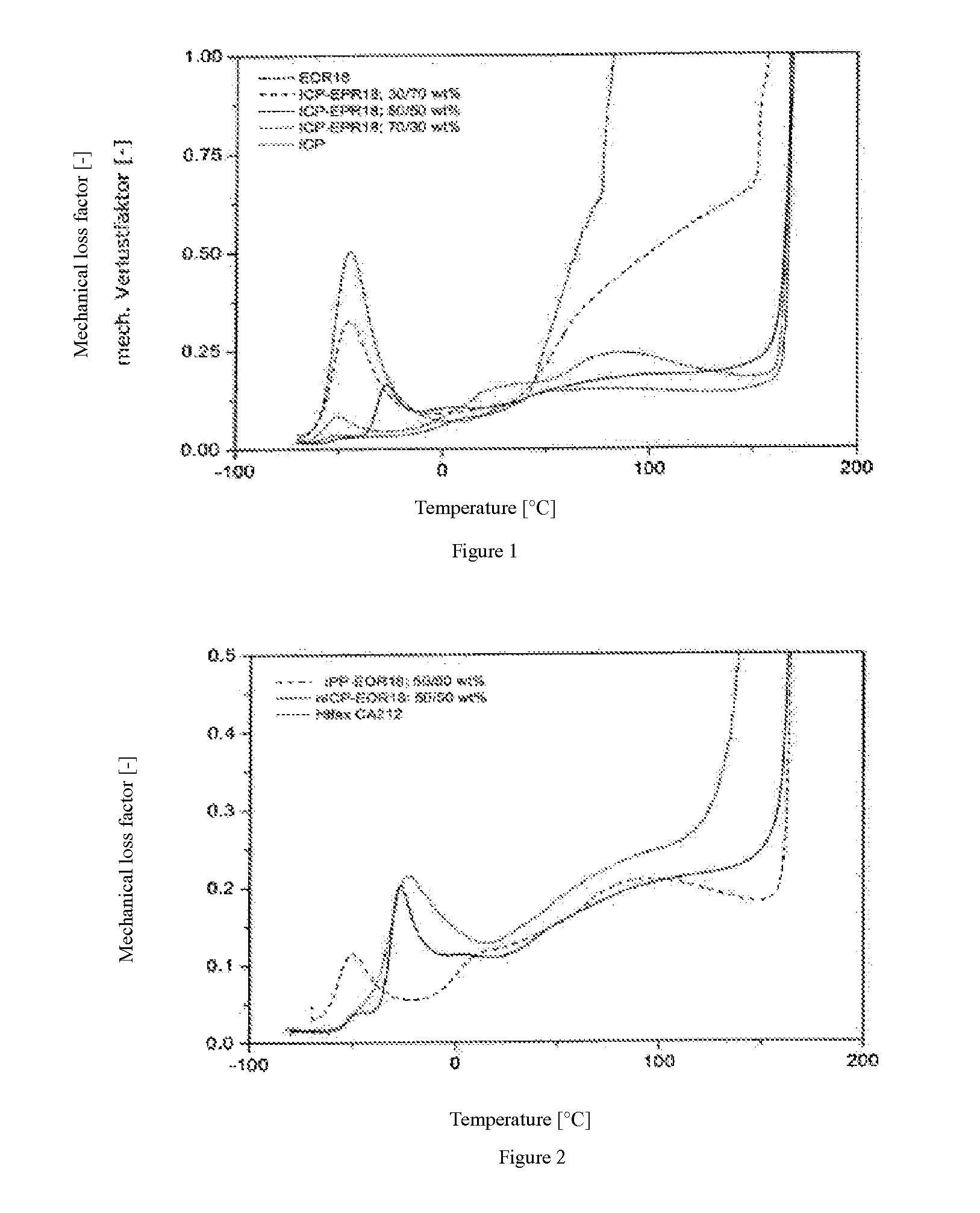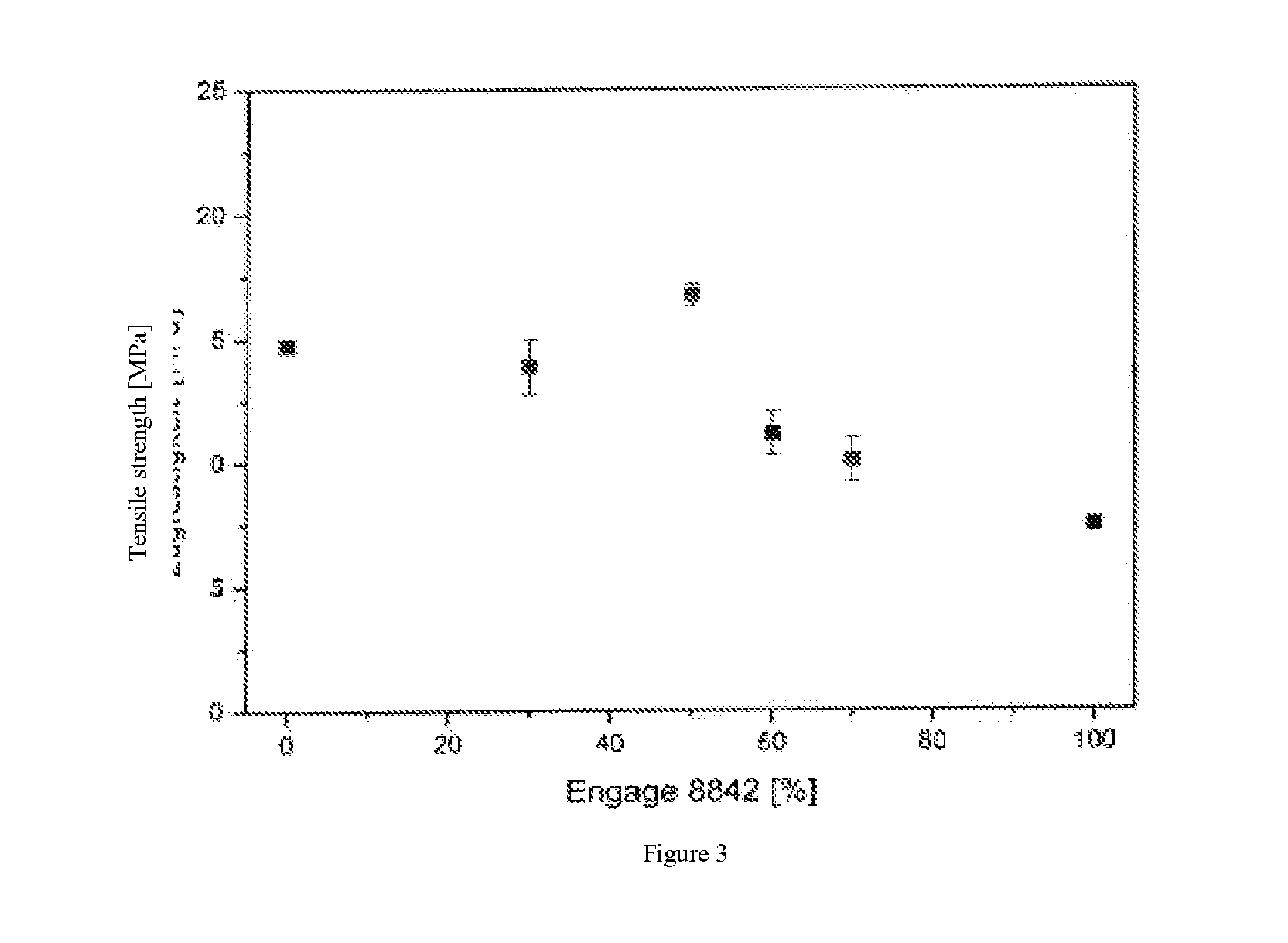Thermoplastic mixture with high flexibility and high melting point
a technology of thermoplastic mixture and flexible polymer, applied in the direction of biocides, antifouling/underwater paints, coatings, etc., can solve the problems of poor notch impact strength, polypropylene copolymer still has a relatively high stiffness, and homopolymer or copolymer made flexible in this manner is often brittle at low temperatures
- Summary
- Abstract
- Description
- Claims
- Application Information
AI Technical Summary
Benefits of technology
Problems solved by technology
Method used
Image
Examples
examples
[0031]Below some examples are indicated, which further illustrate the invention but are not intended to limit the scope of the invention in any way. Unless otherwise indicated, the proportions and percentages refer to the weight.
[0032]For the determination of the 1-octene content in the ethylene-1-octene copolymer, 1H-NMR spectroscopy was carried out with a Bruker Ultrashield 300 MHz. 30-35 mg of a sample of the copolymer were dissolved in 0.7 mL of 1,2-dichlorobenzene-d4 for 2 hours at 150° C. in the microwave oven and 256 scans were accumulated at 130° C. For the calculation of the 1-octene content, the following formula was used:
ICH33ICH22·(1-13x)+ICH33=13x
where ICH3 corresponds to the integral of the peak at 0.9 ppm assigned to the methyl terminal group, and ICH2 corresponds to the integral of the peak at 1.3 ppm which is assigned to the H atoms of the CH2 groups of the base structure and of the 1-octene side chains, and x corresponds to the content of 1-octene in mol %. The mea...
PUM
| Property | Measurement | Unit |
|---|---|---|
| melting point | aaaaa | aaaaa |
| melting point | aaaaa | aaaaa |
| melting point | aaaaa | aaaaa |
Abstract
Description
Claims
Application Information
 Login to View More
Login to View More - R&D
- Intellectual Property
- Life Sciences
- Materials
- Tech Scout
- Unparalleled Data Quality
- Higher Quality Content
- 60% Fewer Hallucinations
Browse by: Latest US Patents, China's latest patents, Technical Efficacy Thesaurus, Application Domain, Technology Topic, Popular Technical Reports.
© 2025 PatSnap. All rights reserved.Legal|Privacy policy|Modern Slavery Act Transparency Statement|Sitemap|About US| Contact US: help@patsnap.com



